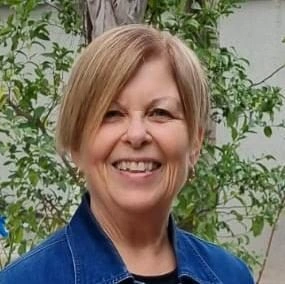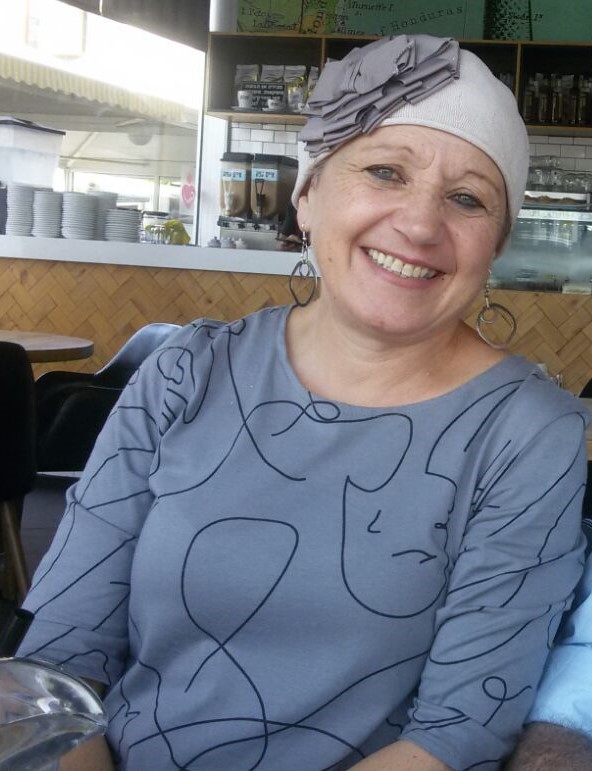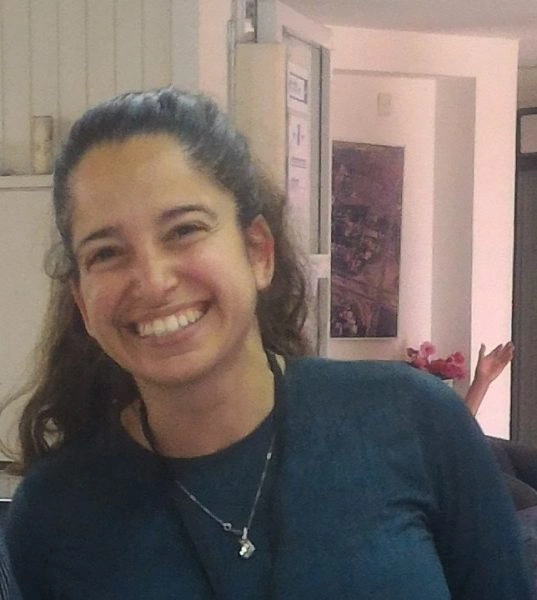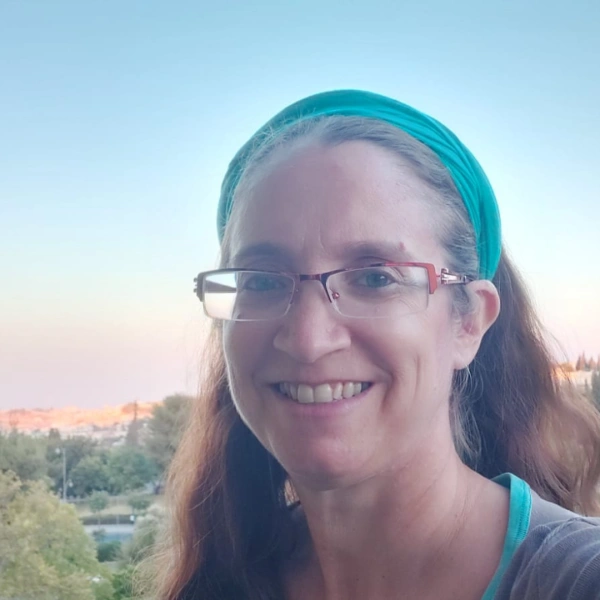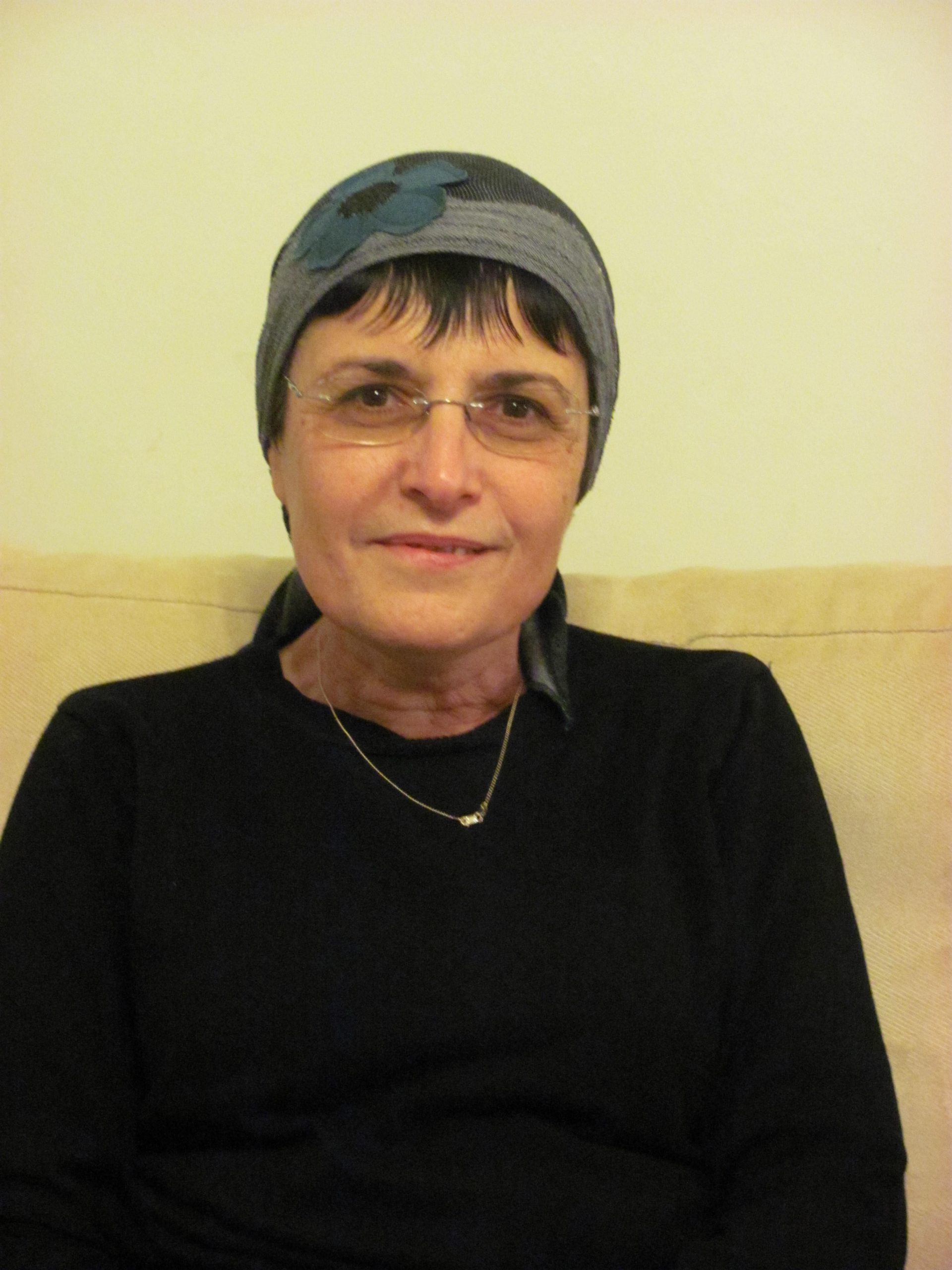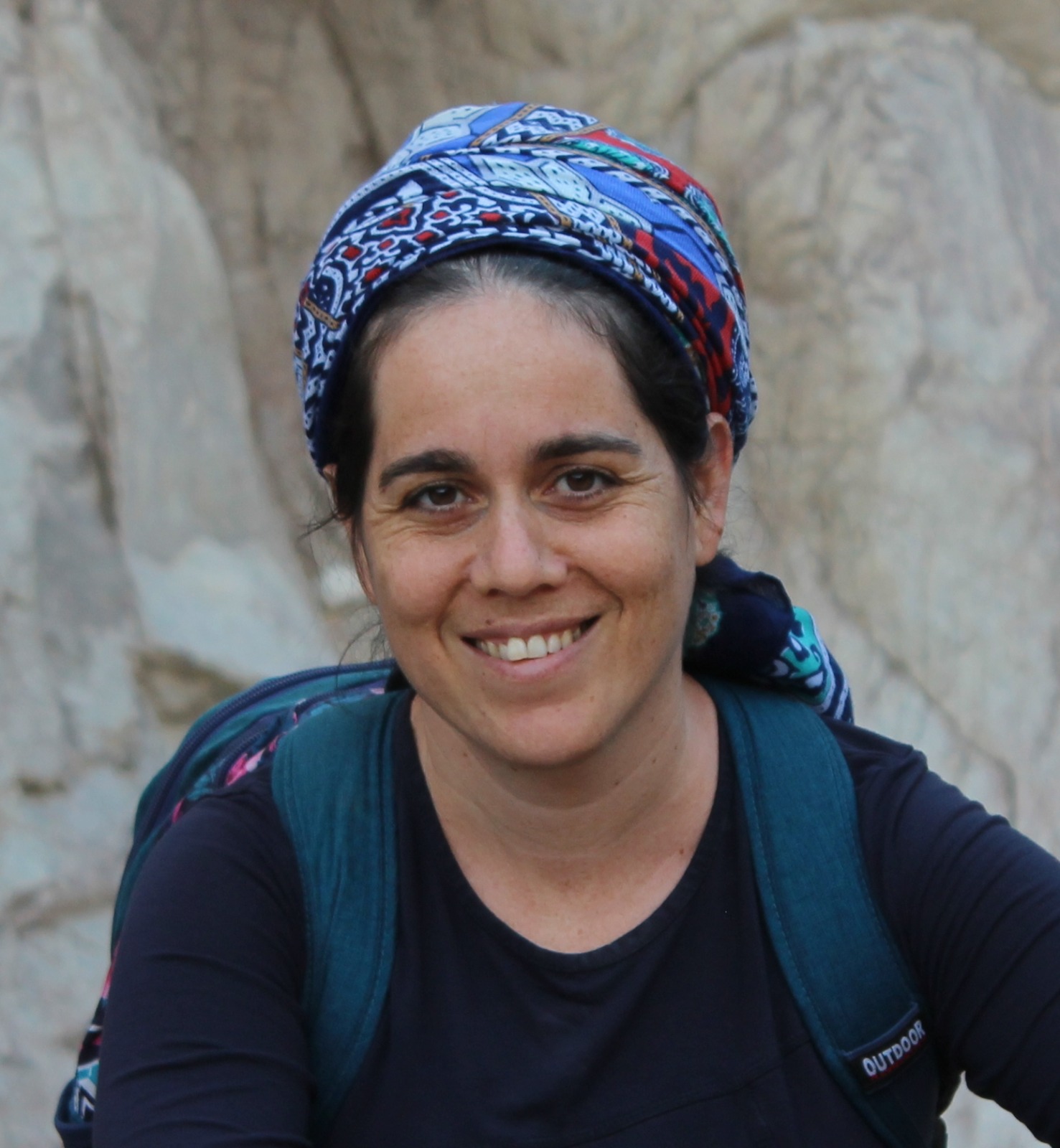מותר לשחוט מסוכנת בתנאי שלא מת עד ששוחט את שני הסימנים. מניין לנו שמותר לשחוט מסוכנת ולא דנים בו כטריפה?
רוצים להקדיש למידה? התחל כאן:
העמקה
רוצה להבין מה באמת קורה מתחת לפני השטח של הסוגיה?
שיעורים, פודקאסטים והרחבות של מיטב המורות שלנו יפתחו לך עוד זוויות וכיווני חשיבה.
חדשה בלימוד הגמרא?
זה הדף הראשון שלך? איזו התרגשות עצומה! יש לנו בדיוק את התכנים והכלים שיעזרו לך לעשות את הצעדים הראשונים ללמידה בקצב וברמה שלך, כך תוכלי להרגיש בנוח גם בתוך הסוגיות המורכבות ומאתגרות.
פסיפס הלומדות שלנו
גלי את קהילת הלומדות שלנו, מגוון נשים, רקעים וסיפורים. כולן חלק מתנועה ומסע מרגש ועוצמתי.
חולין לז
מאי כי מהניא חבת הקדש לפסולא דגופיה אבל למימנא ביה ראשון ושני לא או דלמא לא שנא תיקו:
The Gemara asks: What is the resolution of the dilemma raised by Rabbi Shimon ben Lakish: When regard for sanctity is effective in rendering an item susceptible to impurity, is it only to disqualify that item itself, but to count the descending levels of first-degree impurity and second-degree impurity, it is not effective; or perhaps once it is rendered susceptible to impurity there is no difference whether it is rendered susceptible by means of regard for sanctity or by means of contact with liquids? The Gemara answers: The dilemma shall stand unresolved.
מתני׳ השוחט את המסוכנת רשב”ג אומר עד שתפרכס ביד וברגל ר”א אומר דיה אם זינקה אמר ר”ש השוחט בלילה ולמחר השכים ומצא כתלים מלאים דם כשרה שזינקה וכמדת ר”א וחכ”א עד שתפרכס או ביד או ברגל או עד שתכשכש בזנבה
MISHNA: In the case of one who slaughters an animal that is in danger of imminent death, Rabban Shimon ben Gamliel says: The slaughter is valid only in a case where after the slaughter it convulses with its foreleg and with its hind leg. Rabbi Eliezer says: It is sufficient if blood spurted from the neck. Rabbi Shimon says: In the case of one who slaughters at night and the next day he awoke and found walls full of blood, the slaughter is valid, as it is clear that the blood spurted, and this is in accordance with the rule of Rabbi Eliezer. And the Rabbis say: It is valid only in a case where it convulses with its foreleg or with its hind leg, or in a case where it wags its tail.
אחד בהמה דקה ואחד בהמה גסה בהמה דקה שפשטה ידה ולא החזירה פסולה שאינה אלא הוצאת נפש בלבד במה דברים אמורים שהיתה בחזקת מסוכנת אבל אם היתה בחזקת בריאה אפי’ אין בה אחד מכל הסימנים הללו כשרה:
This is the halakha with regard to both a small animal, e.g., a sheep, and a large animal, e.g., a cow, that is in danger of imminent death. The slaughter of a small animal that when being slaughtered extended its foreleg that was bent and did not restore it to the bent position is not valid, as extending the foreleg is only part of the natural course of removal of the animal’s soul from its body and not a convulsion indicating life. In what case is this statement said? It is in a case where the presumptive status of the animal was that it was in danger of imminent death. But if its presumptive status was that it was healthy, then even if there were none of these indicators, the slaughter is valid.
גמ׳ מסוכנת ממאי דשריא וממאי תיסק אדעתין דאסירא דכתיב (ויקרא יא, ב) זאת החיה אשר תאכלו חיה אכול ושאינה חיה לא תאכל והא מסוכנת אינה חיה
GEMARA: The Gemara asks: From where is it known that the flesh of an animal in danger of imminent death is permitted by means of slaughter? The Gemara responds with a question: And from where would it enter your mind that it is prohibited? The Gemara explains that one may have thought it is prohibited, as it is written: “These are the living beings [haḥayya] that you may eat among all the animals that are on the earth” (Leviticus 11:2). One might have thought that the verse is saying: Eat an animal that is fit to live [ḥayya], but do not eat an animal that is not fit to live. And this animal in danger of imminent death is not fit to live.
מדאמר רחמנא (דברים יד, כא) נבלה לא תאכל מכלל דמסוכנת שריא דאי ס”ד מסוכנת אסירא השתא מחיים אסירא לאחר מיתה מיבעי
The fact that its meat is permitted is derived from the fact that the Merciful One states that you shall not eat an unslaughtered animal carcass, as it is written: “You shall not eat any unslaughtered carcass” (Deuteronomy 14:21); one learns by inference that eating the meat of an animal in danger of imminent death is permitted. As, if it enters your mind that eating the meat of an animal in danger of imminent death is prohibited, now if an animal is prohibited while alive, is it necessary to state that it is prohibited after death?
ודלמא היינו נבלה היינו מסוכנת לא ס”ד דכתיב (ויקרא יא, לט) וכי ימות מן הבהמה אשר היא לכם לאכלה הנוגע בנבלתה לאחר מיתה הוא דקרייה רחמנא נבלה מחיים לא אקרי נבלה
The Gemara rejects that proof. And that is not a legitimate inference, as perhaps the halakhic status of an unslaughtered carcass is the same as that of an animal in danger of imminent death, and the prohibition: “You shall not eat any unslaughtered carcass,” includes both. The Gemara answers: It would not enter your mind to say so, as it is written: “And if any animal of which you may eat dies, one who touches its carcass shall be impure until the evening” (Leviticus 11:39). This indicates that it is after death that the Merciful One calls the animal a carcass; while alive, the animal is not called a carcass.
ודלמא לעולם אימא לך היינו נבלה היינו מסוכנת מחיים בעשה לאחר מיתה בלאו
The Gemara questions that understanding. And perhaps, actually I will say to you: The halakhic status of an unslaughtered carcass is the same as that of an animal in danger of imminent death, but if one slaughters the animal in danger of imminent death while alive, he would be in violation of a positive mitzva: “These are the living beings that you may eat” (Leviticus 11:2), whereas after its death, he would be in violation of a prohibition: “You shall not eat any unslaughtered carcass” (Deuteronomy 14:21).
אלא מדאמר רחמנא (שמות כב, ל) טרפה לא תאכל מכלל דמסוכנת שריא דאי ס”ד מסוכנת אסירא השתא מסוכנת דלא מחסרא אסירא טרפה מיבעיא
Rather, the fact that its meat is permitted is derived from the fact that the Merciful One states you shall not eat that an animal with a wound that will cause it to die within twelve months [tereifa], as it is written: “And you shall not eat any animal that was mauled in the field [tereifa]” (Exodus 22:30). From here, one learns by inference that eating the meat of an animal in danger of imminent death is permitted. As, if it enters your mind that eating the meat of an animal in danger of imminent death is prohibited, now that an animal in danger of imminent death that is not lacking any limb is prohibited, is it necessary to state that a tereifa, an animal that was mauled and lacking body parts, is prohibited?
ודלמא היינו טרפה היינו מסוכנת ולעבור עליו בעשה ולא תעשה א”כ נבלה דכתב רחמנא ל”ל ומה מחיים קאי עלה בלאו ועשה לאחר מיתה מיבעיא
The Gemara rejects that proof. And that is not a legitimate inference, as perhaps the halakhic status of a tereifa that is lacking body parts is the same as that of an animal in danger of imminent death that is not lacking body parts, and both are included in the category of tereifa. This would render one who slaughters either to be in violation of both a positive mitzva: “These are the living beings that you may eat,” and a prohibition: “And you shall not eat any animal that was mauled in the field [tereifa].” The Gemara questions that understanding: If so, why do I need the prohibition that the Merciful One writes with regard to an unslaughtered carcass? If while an animal is alive one stands in violation of a prohibition and a positive mitzva, is it necessary to state that it is prohibited after death?
ודלמא היינו נבלה היינו טרפה היינו מסוכנת ולעבור עליו בשני לאוין ועשה
The Gemara objects: And that is not a legitimate question, as perhaps the halakhic status of an unslaughtered carcass is the same as a tereifa that is lacking body parts, and is the same as that of an animal in danger of imminent death that is not lacking body parts. Therefore, when the Torah writes the word “carcass,” it is the same as though it had written tereifa and the same as though it had written an animal in danger of imminent death. The Torah prohibits each, and the result will be that he will violate two prohibitions and a positive mitzva.
אלא מהכא (ויקרא ז, כד) וחלב נבלה וחלב טרפה יעשה לכל מלאכה ואכל לא תאכלוהו ואמר מר למאי הלכתא אמרה התורה יבא איסור נבלה ויחול על איסור חלב יבא איסור טרפה ויחול על איסור חלב
Rather, the fact that the meat of an animal in danger of imminent death is permitted is derived from here: “And the fat of a carcass and the fat of a tereifa may be used for any purpose; but you shall not eat it” (Leviticus 7:24). And the Master says: In order to derive what halakha is this verse written? Would one imagine that because it is an unslaughtered carcass or a tereifa its fat would be permitted for consumption? The Torah states: Let the prohibition against eating an unslaughtered carcass come and take effect upon the prohibition against eating forbidden fat, which already exists. One who eats the forbidden fat of an unslaughtered carcass is liable for violation of both prohibitions. Likewise, the word “tereifa” in the verse teaches: Let the prohibition against eating a tereifa come and take effect upon the prohibition against eating forbidden fat, which already exists, so that one who eats the forbidden fat of a tereifa is liable for transgressing both prohibitions.
ואי סלקא דעתך טרפה היינו מסוכנת לכתוב רחמנא חלב נבלה יעשה לכל מלאכה וחלב טרפה לא תאכלוהו ואנא אמינא ומה מחיים אתי איסור טרפה חייל אאיסור חלב לאחר מיתה מיבעיא
And if it enters your mind to say that the halakhic status of a tereifa lacking body parts is the same as that of an animal in danger of imminent death, let the Merciful One write: And the fat of a carcass may be used for any purpose, and the fat of a tereifa you shall not eat. The prohibition against eating the forbidden fat should have been written exclusively with regard to a tereifa, and I would say: If while an animal is alive and in danger of imminent death the prohibition against eating a tereifa takes effect upon the prohibition against eating forbidden fat, is it necessary to state that after its death the prohibition against eating an unslaughtered carcass takes effect upon the prohibition against eating forbidden fat?
אלא מדכתב רחמנא (ויקרא ז, כד) נבלה מכלל דטרפה לאו היינו מסוכנת
The Gemara concludes: Rather, from the fact that the Merciful One writes that the prohibition against eating an unslaughtered carcass takes effect upon the prohibition against eating forbidden fat, one learns by inference that the tereifa in the verse is not the same as an animal in danger of imminent death. Rather, the tereifa in the verse is an animal that was mauled and is lacking body parts, and it is only that animal that is prohibited after slaughter. Eating an animal in danger of imminent death after slaughter is permitted.
מתקיף לה מר בר רב אשי ודלמא לעולם אימא לך היינו טרפה היינו מסוכנת ודקאמרת נבלה דכתב רחמנא ל”ל להך נבלה דלא אתיא מכח מסוכנת והיכי דמי שעשאה גיסטרא התם נמי אי אפשר דלא הוי מסוכנת פורתא מקמי דליפסק לרובא
Mar bar Rav Ashi objects to this: And perhaps, actually I will say to you that the halakhic status of a tereifa is the same as that of an animal in danger of imminent death, and with regard to that which you said: Why do I need the prohibition with regard to an unslaughtered carcass that the Merciful One writes, one can explain that it is necessary for that unslaughtered carcass that does not come as a result of danger of imminent death. And what are the circumstances of that unslaughtered carcass? It is in a case where one rendered the animal like a shard, by cutting it into two widthwise. The Gemara rejects that distinction: There too, in the case where one rendered the animal like a shard, it is impossible that the animal was not at least somewhat in danger of imminent death before he cut the majority of the animal.
ואיבעית אימא א”כ לימא חלב נבלה וטרפה חלב חלב למה לי זו היא שאין חלבה חלוק מבשרה ויש לך אחרת שחלבה חלוק מבשרה ואיזו זו מסוכנת
And if you wish, say instead that there is a different source for the fact that the meat of an animal in danger of imminent death is permitted. If it is so that an animal in danger of imminent death is included in the category of tereifa, let the verse say: The fat of an unslaughtered carcass and a tereifa. Why do I need it to be written: “Fat of a carcass and the fat of a tereifa”? The term “fat” is repeated to teach that it is this case where the status of its fat is not distinct from the status of its meat, and both are prohibited; but you have another case where the status of its fat, which is forbidden, is distinct from the status of its meat, which is permitted. And which case is that? That is the case of an animal in danger of imminent death.
ואיבעית אימא מהכא (יחזקאל ד, יד) ואומר אהה ה’ אלהים הנה נפשי לא מטומאה ונבלה וטרפה לא אכלתי מנעורי ועד עתה ולא בא בפי בשר פגול
And if you wish, say instead that it is derived from here: “Then I said: Ah, Lord God, my soul has not become impure; and from my youth until now I have not eaten an unslaughtered carcass or a tereifa, and no piggul flesh came into my mouth” (Ezekiel 4:14).
הנה נפשי לא מטומאה שלא הרהרתי ביום לבא לידי טומאה בלילה ונבלה וטרפה לא אכלתי מנעורי שלא אכלתי בשר כוס כוס מעולם ולא בא בפי בשר פגול שלא אכלתי מבהמה שהורה בה חכם משום רבי נתן אמרו שלא אכלתי מבהמה שלא הורמו מתנותיה
The Gemara explains: “My soul has not become impure” means that I did not consider any sinful thoughts during the day that would cause me to come to impurity due to a seminal emission at night. “And from my youth until now I have not eaten an unslaughtered carcass or a tereifa” means that I never ate the flesh of an animal that was in danger of imminent death, leading one to say: Slaughter it, slaughter it quickly, before it dies. “And no piggul flesh came into my mouth” means that I never ate from an animal with regard to which there was uncertainty whether it is forbidden and a Sage issued a ruling to permit it. They said in the name of Rabbi Natan that the last portion of the verse means: That I never ate from an animal whose gifts to which members of the priesthood are entitled, i.e., the foreleg, the jaw, and the maw, were not already separated.
אי אמרת בשלמא שריא היינו רבותיה דיחזקאל אלא אי אמרת אסירא מאי רבותיה דיחזקאל
The proof is: Granted, if you say that it is permitted to slaughter and eat an animal in imminent danger of death, then that is the greatness of Ezekiel, as, although eating it is permitted, he refrained from doing so. But if you say that it is forbidden to slaughter and eat that animal, what in that action attests to the greatness of Ezekiel? Apparently, it is permitted to slaughter and eat an animal in danger of imminent death.
ה”ד מסוכנת אמר רב יהודה אמר רב כל שמעמידין אותה ואינה עומדת רב חנינא בר שלמיא משמיה דרב אמר אפילו אוכלת בקעיות רמי בר יחזקאל אמר אפילו אוכלת קורות
§ The Gemara asks: What are the circumstances of an animal in danger of imminent death? Rav Yehuda said that Rav said: It is any animal with regard to which one stands it on its feet but it does not stand unaided. Rav Ḥanina bar Shelamya in the name of Rav said: That indicator is so clear that even if that animal maintains sufficient strength in its jaw and eats pieces of wood, if it is unable to stand, its status is that of an animal in danger of imminent death. Rami bar Yeḥezkel said: That is the case even if that animal eats beams.
בסורא מתני הכי בפומבדיתא מתני הכי היכי דמיא מסוכנת אמר רב יהודה אמר רב כל שמעמידין אותה ואינה עומדת ואפילו אוכלת בקעיות רמי בר יחזקאל אמר אפילו אוכלת קורות
In Sura, they would teach the exchange in that manner. In Pumbedita, they would teach the exchange in this manner: What are the circumstances of an animal in danger of imminent death? Rav Yehuda said that Rav said: It is any animal with regard to which one stands it on its feet but it does not stand unaided, even if that animal maintains sufficient strength in its jaw and eats pieces of wood. Rami bar Yeḥezkel said: That indicator is so clear that even if that animal maintains sufficient strength in its jaw and eats beams, if it is unable to stand its status is that of an animal in danger of imminent death.
אשכחינהו שמואל לתלמידי דרב אמר להו מאי אמר רב במסוכנת אמרו ליה הכי אמר רב
Shmuel found students of Rav after Rav’s death. He said to them: What did Rav say with regard to an animal in danger of imminent death? They said to him: This is what Rav said:



















